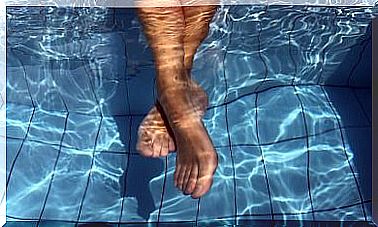Runnorexia Or Running Addiction: How Can It Be Identified?
Going for a run is positive because it improves circulation, brain oxygenation, and helps maintain an adequate body mass index. However, doing it obsessively is harmful to health. In this article we are going to see what runnorexia or running addiction is all about.
Any activity can become a problem for human beings, even those that were originally planned to improve the quality of life. Nothing that is done in excess is healthy; in life it is necessary to maintain a balance.
What is runnorexia?
Although it is a physical activity with the aim of improving aesthetics and general health, excessive running can become a serious problem for some people. In this sense, the runnorexia or addiction run is defined as a behavioral dependency type .
People who start the habit of doing sports do so with the intention of improving their quality of life. But they can end up generating a pathological dependence on the activity.
In the case of runnorexia , the problem is that the person completely loses the objective of going for a run ; It no longer does it for the healthy benefits that exercise provides, but just seeks to satisfy an irrational desire that generates momentary pleasure .
Social influence represents one of the main risk factors for the acquisition of behavioral addictions. For example, a person who does not feel satisfied with their physical appearance is influenced by beauty stereotypes, which they will want to reach aggressively.

How can it be identified?
As with other types of addictions, the main indicator to recognize runnorexia or addiction to running is the frequency with which the activity is performed . In cases where running is performed daily, as a kind of ritual, the prevalence indicator is met.
Of course, it will also be necessary to recognize the level of importance that people attach to it. For example, someone who is unable to miss a training day without feeling distressed would be meeting the irrational behavior indicator .
In the same vein, another of the signs to establish whether going for a run has become a problem is the intensity of the behavior. Severe cases occur when a person cannot stop, even having some kind of discomfort. An example of this would be going for a run without recovering from an injury.
Overtraining is not the same as the addiction of going for a run. In the case of the person who overtrains it could be due to anxiety about some competition. What happens with runnorexia is that it does not respond to the search for a goal, but to the need to maintain the behavior in a constant and irrational way.
What are the signs of runnorexia to look out for?
The indicators of addiction are usually reflected in a fairly clear symptomatology. Taking into account that, in this case, it is a behavior, let’s see which are the most obvious signs:
- Obsession: the person is immersed in his routine of running to the point of not being able to avoid doing it on a daily basis.
- Negative consequences occur in important areas of life: work, study, family.
- Inability to maintain control.
- Denial: It is difficult for an addict to accept that he is presenting a problem due to addictive behavior.
What are the physical and social consequences?
The negative consequences of running addiction can be encompassed in two aspects:
- Physical: from muscle injuries to exaggerated loss of mass.
- Social: neglect of important relationships with family and friends.
In some cases, people become estranged from their closest social circle because they try to make them see reason about their addiction. The physical and social consequences of addicted people always affect their family and friends.
How can runnorexia or running addiction be overcome?
To overcome a behavioral addiction it will be necessary to accept that you have a problem; from that moment on, people will be able to start the process of detoxifying their behavior. In this sense, they must acquire new habits that little by little will gain ground.
Psychological attention may be required in cases of running addiction . Cognitive behavioral therapy is the most used in this type of case, since it works quite well to restructure the mental schemes that maintain the addiction.
Support from family and friends can make the difference between the success and failure of the addiction coping process. When close people are able to understand that their loved one is facing an addiction, the best thing to do is to avoid judging their situation.
The best way to provide support is by doing it from compression, seeking that the affected person feels understood and supported. Nor should the problem be downplayed. Phrases like “you just have to stop running, you can” or “it’s not that hard to stop running” are counterproductive.

Recommendations to prevent addiction to running or runnorexia
Some ideas to avoid runnorexia or addiction to running start from self-perception, that is, that a person has a good concept of himself. This principle is based on the fact that good self-esteem encourages healthy self-care habits.
It is recommended to enhance self-esteem by making an objective evaluation of the things that make us proud. The idea is not to focus only on what we consider negative.
Finally, it is important to be careful in the way we structure routines. For example, it is not a good idea to be rigid when creating an exercise plan. The most appropriate thing will be to have rest days in which we can do other things that are also beneficial.









